- News
- Reviews
- Bikes
- Accessories
- Accessories - misc
- Computer mounts
- Bags
- Bar ends
- Bike bags & cases
- Bottle cages
- Bottles
- Cameras
- Car racks
- Child seats
- Computers
- Glasses
- GPS units
- Helmets
- Lights - front
- Lights - rear
- Lights - sets
- Locks
- Mirrors
- Mudguards
- Racks
- Pumps & CO2 inflators
- Puncture kits
- Reflectives
- Smart watches
- Stands and racks
- Trailers
- Clothing
- Components
- Bar tape & grips
- Bottom brackets
- Brake & gear cables
- Brake & STI levers
- Brake pads & spares
- Brakes
- Cassettes & freewheels
- Chains
- Chainsets & chainrings
- Derailleurs - front
- Derailleurs - rear
- Forks
- Gear levers & shifters
- Groupsets
- Handlebars & extensions
- Headsets
- Hubs
- Inner tubes
- Pedals
- Quick releases & skewers
- Saddles
- Seatposts
- Stems
- Wheels
- Tyres
- Health, fitness and nutrition
- Tools and workshop
- Miscellaneous
- Buyers Guides
- Features
- Forum
- Recommends
- Podcast
review
£1,599.00
VERDICT:
Well built top-end hybrid that's fun to ride, although its sub-£1000 sibling looks the value-for-money buy
Weight:
8,800g
Contact:
www.whytebikes.com
At road.cc every product is thoroughly tested for as long as it takes to get a proper insight into how well it works. Our reviewers are experienced cyclists that we trust to be objective. While we strive to ensure that opinions expressed are backed up by facts, reviews are by their nature an informed opinion, not a definitive verdict. We don't intentionally try to break anything (except locks) but we do try to look for weak points in any design. The overall score is not just an average of the other scores: it reflects both a product's function and value – with value determined by how a product compares with items of similar spec, quality, and price.
What the road.cc scores meanGood scores are more common than bad, because fortunately good products are more common than bad.
- Exceptional
- Excellent
- Very Good
- Good
- Quite good
- Average
- Not so good
- Poor
- Bad
- Appalling
The 2011 Whyte Montpellier was a three grand exercise in brand awareness as much as it was a bike for sale, but the 2012 incarnation comes in at only just over half the price whilst keeping some of the aspirational componentry bolted to Whyte's MTB-derived urban frame. Overall it's a cracking bike, fun and versatile, although the existence of the £999 Stirling is for a lot of people going to provide the biggest disincentive to buying one.
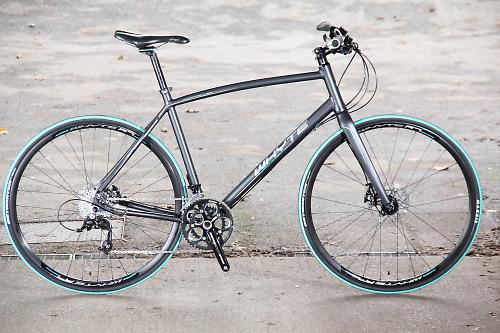
Whyte's approach to building urban bikes is to make them a bit like their mountain bikes. That means they're long and rangy, with a relaxed head angle. The Montpellier frame is crafted from multi-butted, hydroformed 6061 Aluminium. It's 130mm across the rear dropouts to give a bit of extra room for your heels, and the rear disc mount is mounted inboard on the chainstay so that the calliper doesn't befoul your mudguard or rack; assuming you want to fit them, there's rack mounts on the seat stays and one hole on the dropout that'll do both assuming you don't want to carry massive loads.
Well, there is on the frame at least. The fork of the Montpellier is a straight bladed, full Carbon affair that's beefy and purposeful, but it doesn't have mudguard eyelets. That's a bit of a miss on a utility bike - even a posh one such as this - and it means you'll have to resort to P-clips (or SKS Raceblade Longs) if you want to fit a front 'guard.

2011's bike came equipped with SRAM Red shiftgear, and that's been downgraded to a Rival rear mech and Apex front mech, with SRAM's dual paddle SL700 shifters instead of the nice DoubleTap ones. The crankset is an FSA Gossamer compact, and you get an 11-32 cassette, so there's plenty of gear range to play with. The BB shell is a press fit unit.
The Hope brakes and wheels have taken a hit too, but the good news is that it's still Hope brakes and wheels, albeit ones not quite as spangly as before. The Hope X2 Race discs are super-light at about 270g per wheel but they don't have masses of power; that got them a bit of a kicking in the MTB press at times but it's much less of an issue in this context. The wheels are Hope EVO hubs (the rear one specially made to fit the 130mm dropouts) laced into Alex Black Dragon rims. Maxxis Detonator 28mm provide the grip and a bit of cushioning.
First impressions are that this is a light bike. It's not 16lb like the original Montpellier was, but it's still sub-20lb and it shows. It's easy to spin up to speed and once you're rattling along it's pretty easy to stay there, too. The wheels aren't the lightest part of this bike – neither the rims nor the tyres are especially feathery – but while that blunts acceleration a touch it's barely noticeable once you're going.

What is noticeable is the slack geometry, and not in a bad way. It's a lovely stable bike, which goes where you point it. I was worried that the head angle would make the steering feel a bit mushy, but there's none of that. Even with the amusingly named Ultra Narrow bar – 'only' 58cm wide – the steering feels direct and responds well to your input. The upright position means that there's not a lot of weight over the front wheel, but even so the front tyre grips well and the bike never feels vague.
Well, almost never. All the above is true up to a point, and that point was about 40mph for me. Once you're really tearing down the hills the unweighted front and slack angles start to make everything feel a touch woolly. Not so's you'd end up in a hedge or anything, but enough for you to scrub the edge off your pace. It's a super bike to carve through the tight turns at the bottom of Cheddar Gorge, for example, but along the top section with its fast, lazy dowhnill curves it wasn't a match for a tighter road frame.
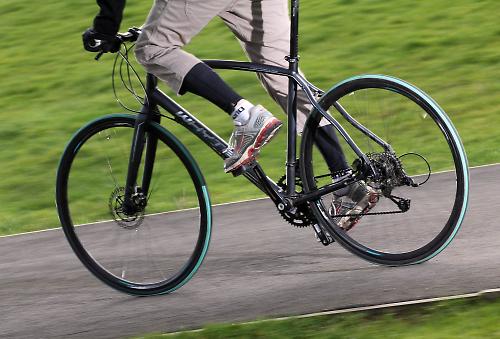
A lot of the time you'll not be on the open road on a bike like this, though, but hacking through town. Those 58cm bars aren't the best when you're filtering through the cars. There's certain gaps you wouldn't go through that you might try on a narrower bike. On the whole though it's very well behaved on city streets, and light and quick enough to get where you want to with a minimum of fuss. It's not the kind of bike you fling through gaps though, anyway. It's more like riding a road bike through town, quick enough to keep up with the traffic and the steering's positive but neutral. The 28mm tyres take the sting out of bad surfaces and the saddle and grips are well padded too. On top of that, the sloping frame means you're running a fair amount of seatpost which helps to soak up the bumps.
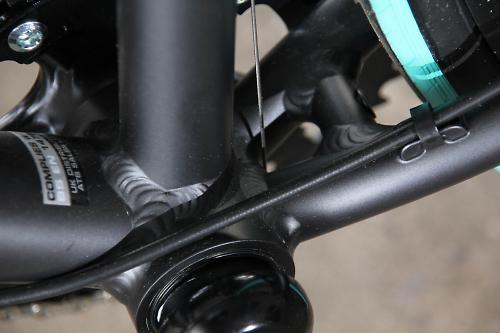
Anyway, comparing it to a road bike at all is testament to the fact that this is a hybrid bike you can do really long rides on. Normally with a bike of this ilk I'd drag myself on a 50km loop just to find out what the maximum sensible ride length would be but I never found the limit of the Montpellier. You could ride this bike all day, no trouble at all. It's comfortable, efficient and easy to pilot. The transmission is excellent, with well defined shifts and good feedback. The frame is exceptionally stiff through the bottom bracket and chainstays so you never feel like you're wasting your input. When you come to slow down the Hope X2 brakes are perfect for road, with plenty enough power and good modulation from a very lightweight unit.
Contact points are good. Saddles are a personal thing but I got on fine with the SR Viper, which is racy in shape but with a bit of give. The Ergon GP1 grips give a nice solid platform for your hands, although as ever I'd prefer to see bar ends for that extra hand position.

All in all it's an excellent ride. There's lots to like about the Montpellier and if you're in the market for an expensive urban bike then I can recommend it. Admittedly that's a bit of a niche but equally, this bike would do for a light tourer, or a flat-barred 'crosser if you're not a serious racer. It's a pretty versatile platform. The main reason not to buy one would be that you can have the next bike down, the Stirling, for £600 less, and at £999 it sneaks under the cycle-to-work limit too. Okay you'll have to make do without your Hope bits, and it'a a bit heavier overall, but I can't shake the feeling that if it was my money I'd be hard pressed to justify the extra expenditure for what is, in nearly every sense, a very similar machine. I'm guessing they'll sell a lot of Stirlings and the Montpellier will remain a low volume range topper, albeit at a lower price and higher volume than the previous year. That doesn't make it a bad bike though, it's very well built and enormous fun to ride.
Verdict
Well built top-end hybrid that's fun to ride, although its sub-£1000 sibling looks the value-for-money buy
road.cc test report
Make and model: Whyte Montpellier
Size tested: XL
About the bike
State the frame and fork material and method of construction. List the components used to build up the bike.
Frame 6061 Hydro Formed T6 Aluminium, Custom Drawn, Multi Butted with Press Fit BB Shell
Fork Straight Bladed Full Carbon Front Fork and Steerer
Rear Shock N/A
Headset FSA Integrated Road, 1 1/8" Sealed Cartridge Bearings, 41mm Diameter
Rear Hub Hope EVO, with Stainless Steel bearings, 32 Hole
Front Hub Hope EVO, with Stainless Steel bearings. 28 Hole
Spokes DT Competition, 15g/14g Black Stainless with Brass Nipples
Rims Alex Black Dragon 24, Deep Section, Disk Specific Road, 32 Hole Rear and 28 Front
Tyres Maxxis Detonator, 700 x 28c, Grey, Folding with Puncture Protection
Shift Levers SRAM SL700, 10 Speed
Front Derailleur SRAM APEX
Rear Derailleur SRAM Rival 10 Speed
Cassette SRAM PG-1050, 11-32, 10 Speed
Chain SRAM PC-1050
Crankset FSA Gossamer, 50-34, 10 Speed, Compact
Bottom Bracket SRAM Press Fit
Seatpost Whyte 20mm Offset, 27.2mm x 350mm, 2014 Alloy, 2 Bolt Clamp
Saddle SR Viper, with Scuff Guards, Snake Skin Cover
Bar Whyte Ultra Narrow, 31.8mm, Flat Bar, 580mm Wide
Stem Whyte, 70mm S, 80mm M, 90mm L & XL
Grips GP1 Ergon Grip, Dual Density
Brakes Front Hope X-2 Race, Matchmaker Clamps
Brakes Rear Hope X-2 Race, Matchmaker Clamps
Brake Levers Hope X-2 Race
Pedals None
Tell us what the bike is for, and who it's aimed at. What do the manufacturers say about it? How does that compare to your own feelings about the bike?
Based on our high performance mountain bike geometry, all our Fast Urban bikes have a long wheelbase and relaxed head angle for high speed stability, and a shorter stem for excellent slow speed manoeuvrability. Unbeatably svelte for a rugged Urban-Proof commuter bike.
Frame and fork
Overall rating for frame and fork
8/10
Tell us about the build quality and finish of the frame and fork?
Very nicely built and detailed
Tell us about the geometry of the frame and fork?
625mm effective top tube, 70/73 angles
How was the bike in terms of height and reach? How did it compare to other bikes of the same stated size?
Rangy but fitted me well
Riding the bike
Was the bike comfortable to ride? Tell us how you felt about the ride quality.
Very comfortable and easy to ride
Did the bike feel stiff in the right places? Did any part of the bike feel too stiff or too flexible?
Transmission section of the frame is super stiff
How did the bike transfer power? Did it feel efficient?
Very efficient
Was there any toe-clip overlap with the front wheel? If so, was it a problem?
No issues with toe overlap
How would you describe the steering? Was it lively, neutral or unresponsive? Neutral
Tell us some more about the handling. How did the bike feel overall? Did it do particular things well or badly?
Overall, handling is excellent with a stiff front end and good feedback. At high speeds the slack angle can feel a bit vague
Which components had the most effect (good or bad) on the bike's comfort? would you recommend any changes?
Contact points are good, tyres are roomy too
Which components had the most effect (good or bad) on the bike's stiffness? would you recommend any changes?
Super stiff transmission
Which components had the most effect (good or bad) on the bike's efficiency? would you recommend any changes?
Very efficient drivetrain and slick shifting
Rate the bike for efficiency of power transfer:
8/10
Rate the bike for acceleration:
7/10
Rate the bike for sprinting:
6/10
Rate the bike for high speed stability:
7/10
Good so long as you're not cornering hard
Rate the bike for cruising speed stability:
9/10
Rate the bike for low speed stability:
8/10
Rate the bike for flat cornering:
8/10
Rate the bike for cornering on descents:
6/10
Good up to a point but a bit vague over 40mph
Rate the bike for climbing:
8/10
Light, upright position, lots of gears
The drivetrain
Rate the drivetrain for performance:
8/10
Rate the drivetrain for durability:
7/10
FSA chainsets aren't generally the most hardy but no problems during testing
Rate the drivetrain for weight:
7/10
Rate the drivetrain for value:
7/10
Wheels and tyres
Rate the wheels and tyres for performance:
8/10
Not super-light but spin up well
Rate the wheels and tyres for durability:
8/10
well-built wheels and sturdy tyres
Rate the wheels and tyres for weight:
6/10
Rate the wheels and tyres for comfort:
7/10
Rate the wheels and tyres for value:
7/10
Controls
Rate the controls for performance:
8/10
Rate the controls for durability:
7/10
Rate the controls for weight:
7/10
Rate the controls for comfort:
7/10
Rate the controls for value:
7/10
Your summary
Did you enjoy riding the bike? Yes
Would you consider buying the bike? I'd like to say yes but I'd end up buying the Stirling
Would you recommend the bike to a friend? Yes, either the Montpellier or its cheaper sibling anyway
Rate the bike overall for performance:
8/10
Rate the bike overall for value:
7/10
About the tester
Age: 38 Height: 190cm Weight: 98kg
I usually ride: whatever I'm testing... My best bike is: Genesis Equilibrium with SRAM Apex
I've been riding for: 10-20 years I ride: Every day I would class myself as: Experienced
I regularly do the following types of riding: time trialling, cyclo cross, commuting, sportives, general fitness riding, fixed/singlespeed, mtb, Mountain Bike Bog Snorkelling, track
Dave is a founding father of road.cc, having previously worked on Cycling Plus and What Mountain Bike magazines back in the day. He also writes about e-bikes for our sister publication ebiketips. He's won three mountain bike bog snorkelling World Championships, and races at the back of the third cats.





























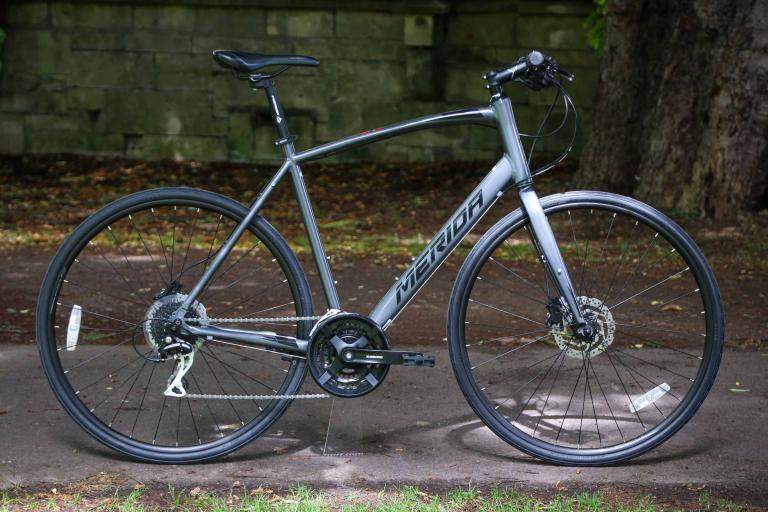
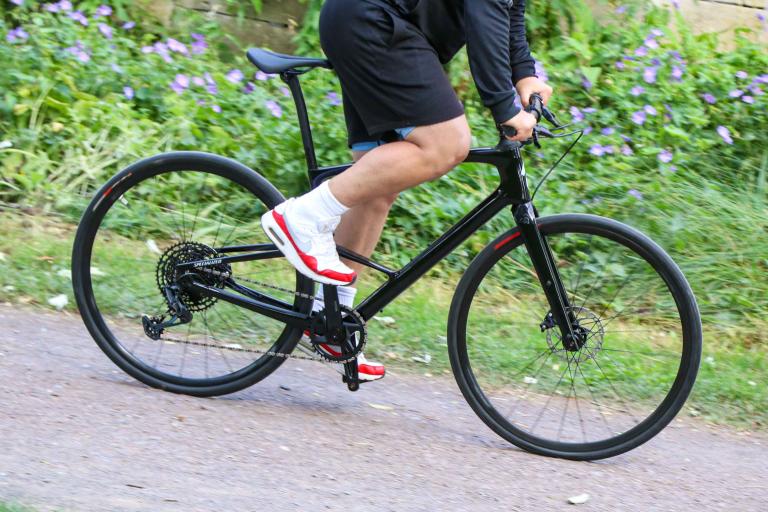
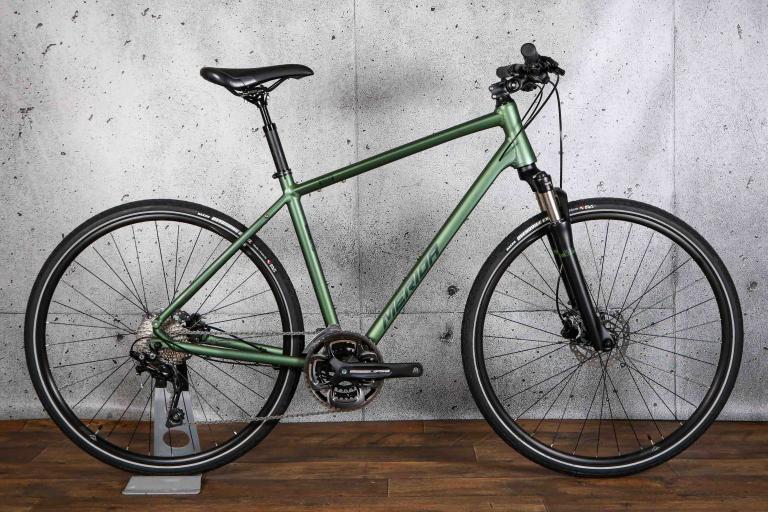
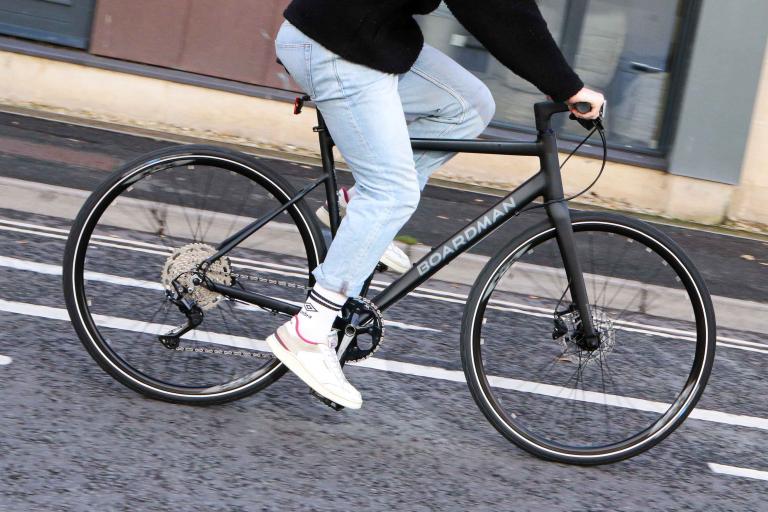
One thing which will influence me next time I buy new wheels is the noise which the freehub makes - how loud it is. I have tinitus and am quite...
More notice needed for Remembrance Sunday road closures...
This is an impressive new way of avoiding work by the police! Several crimes here (eg. phone use) - so is the new game "if we can identify *one*...
Which explains a lot. I reckon the standard of driving in the UK has noticeably decreased in the last 5-10 years. A host of factors no doubt, but I...
He wasn't brake-checking me, he was trying to get me to stop. Nothing good would have come from me stopping.
It was designed around 28mm tyres but there's lots of clearance and could certainly take bigger tyres.
A dinosaur version is shurely for the kiddies. Myself I'd like The Hindenburg. There may be The Freisian, filled with methane rather than hydrogen,...
When I see SLOW HORSES I always think ah, so this is where the ones I bet on are kept...
No great mystery in either case, surely? Both US politician and the motor trade say "choose us and your life will be better and easier!" And other...
theres an attitude I encounter alot locally, and demonstrated in bucket loads by drivers on my commute home tonight, that cyclists shouldnt be on...